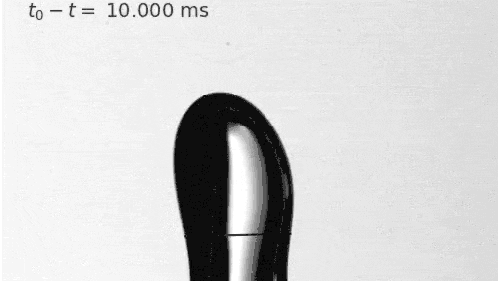Research reveals a singular moment: When a bubble breaks free

Understanding how a drop or bubble suspended in a larger mass of fluid divides into multiple pieces is invaluable for engineers designing chemical reactors, engines and ships, as well as for geoscientists studying interactions of oceans and the atmosphere. But the difficult math underlying the phenomenon has forced scientists to rely on idealized systems that lack real-world nuance. Now, researchers at Princeton University have described the breakup of bubbles surrounded by turbulent flows like those found in industrial processes or in nature.
Using an array of high-speed cameras, researchers showed that the surrounding turbulence effectively freezes during the process, but deformations in the bubble induced by the turbulence alter the time the bubble breaks apart. This breakpoint is known to mathematicians as a singularity—a point beyond which a model that had described a system is no longer valid.
"The singularity is the moment at which the bubble breaks," said lead researcher Luc Deike, an assistant professor of mechanical and aerospace engineering and the Princeton Environmental Institute. "The moment it breaks, you have to change the way you describe it mathematically."
The mathematics underlying the pinching from one bubble into multiple bubbles has been described for many years, but typically in idealized systems such as perfectly smooth, rounded bubbles. In their December 2 article in the Proceedings of the National Academy of Sciences, Deike and his co-researchers accounted for the turbulent, chaotic flow of fluids that accompanies the formation of bubbles and presented an approach to model realistic bubble break-up.
More information: Daniel J. Ruth et al. Bubble pinch-off in turbulence, Proceedings of the National Academy of Sciences (2019). DOI: 10.1073/pnas.1909842116
Journal information: Proceedings of the National Academy of Sciences
Provided by Princeton University





















